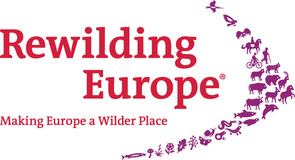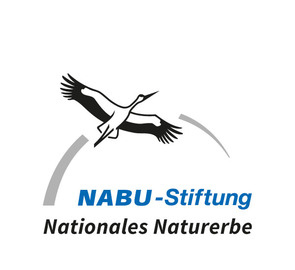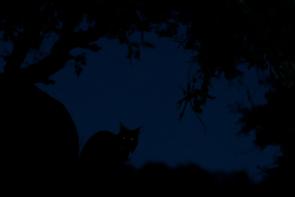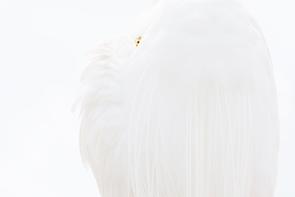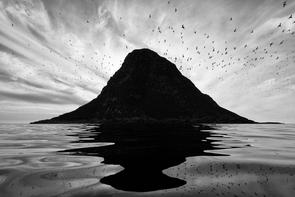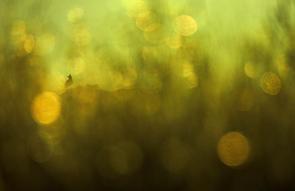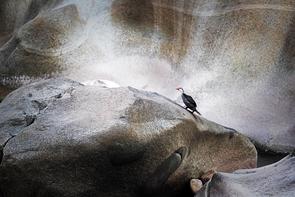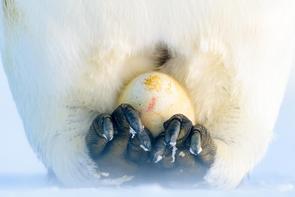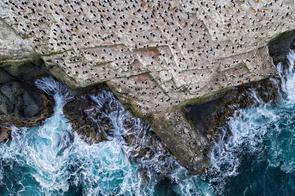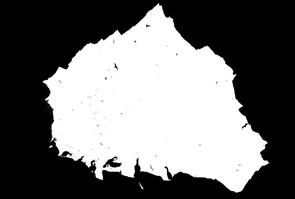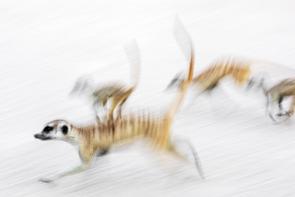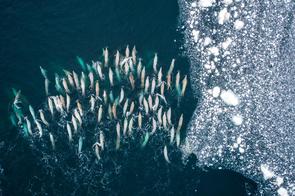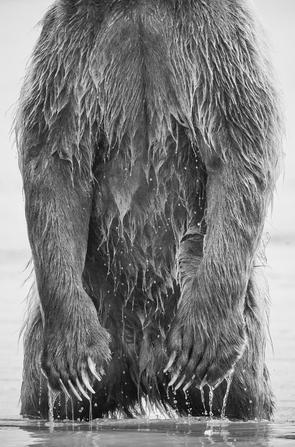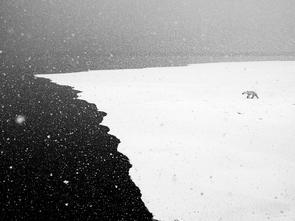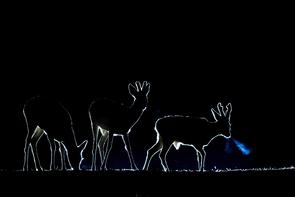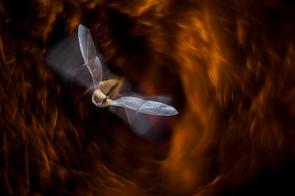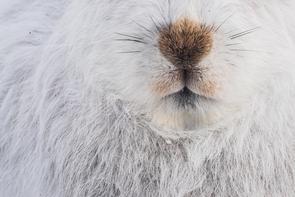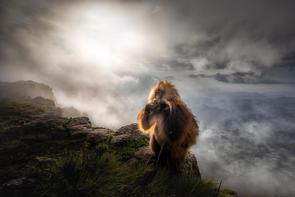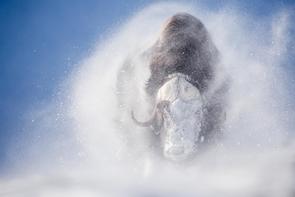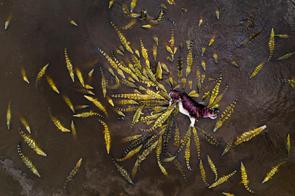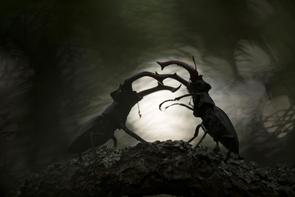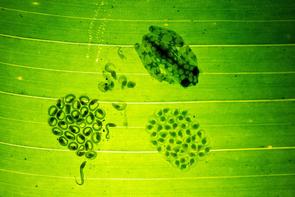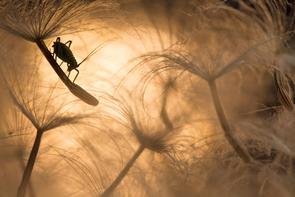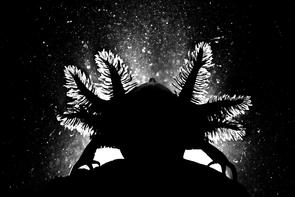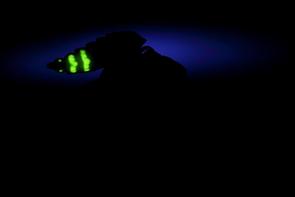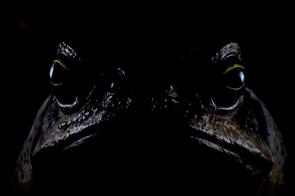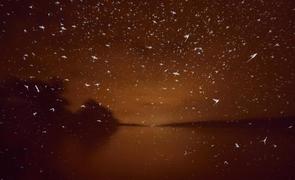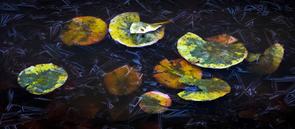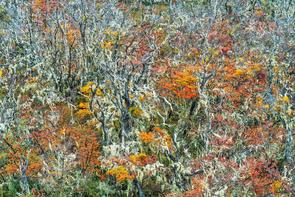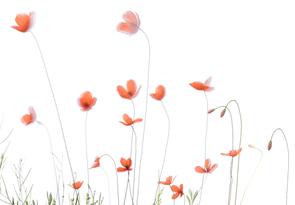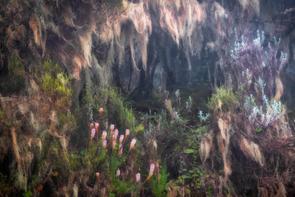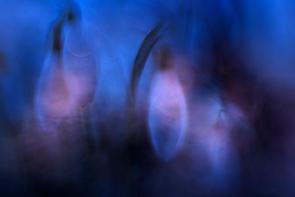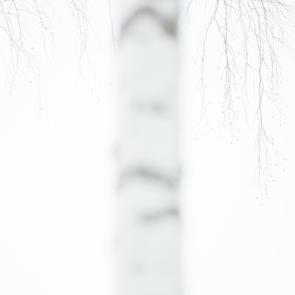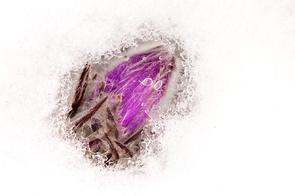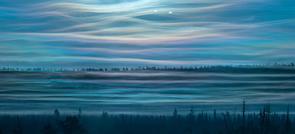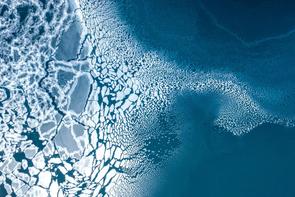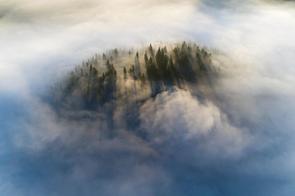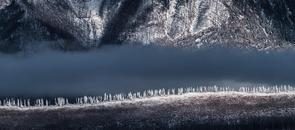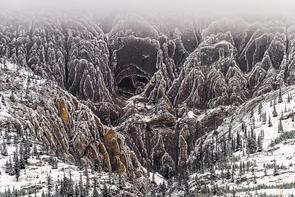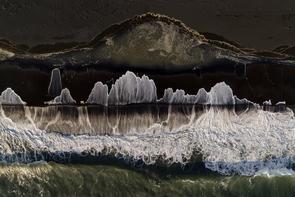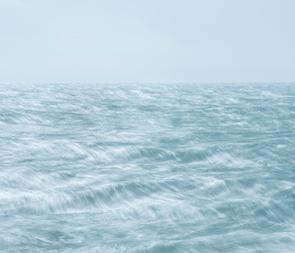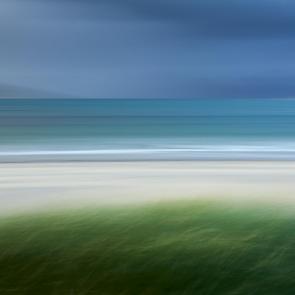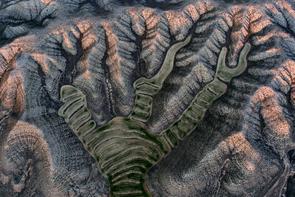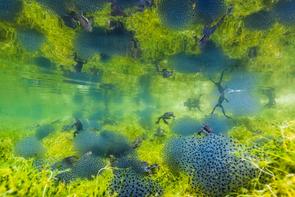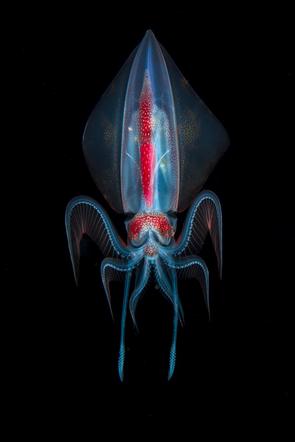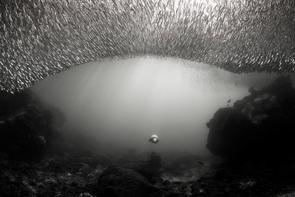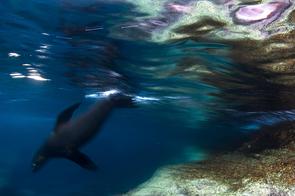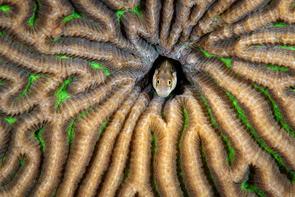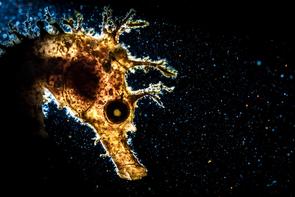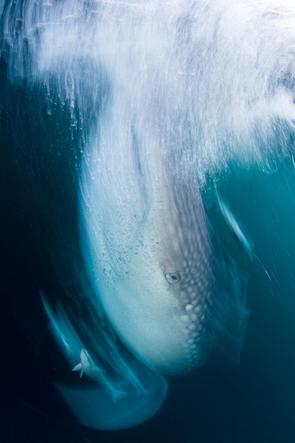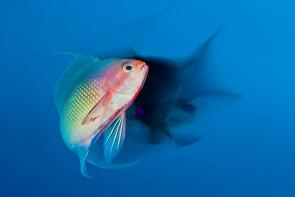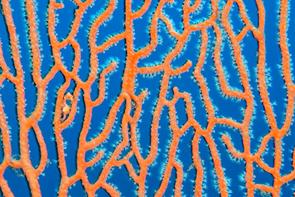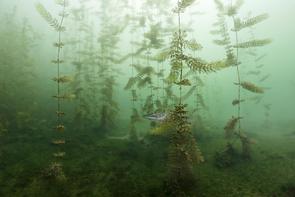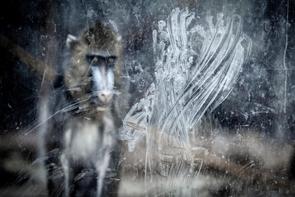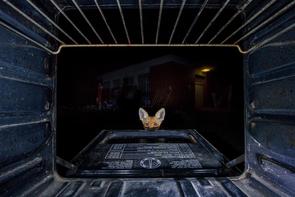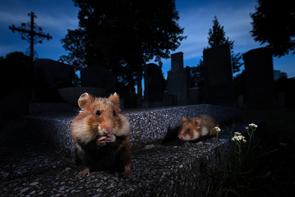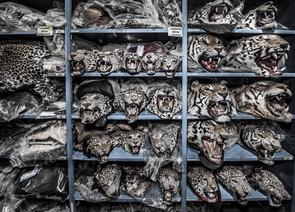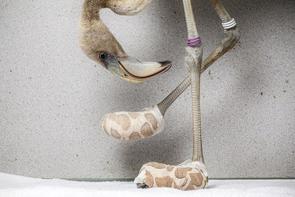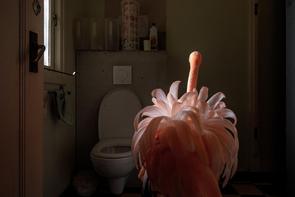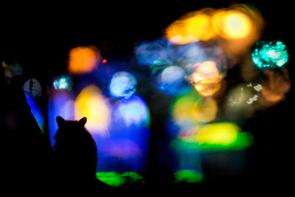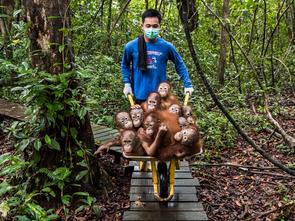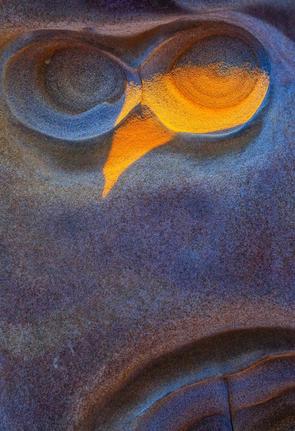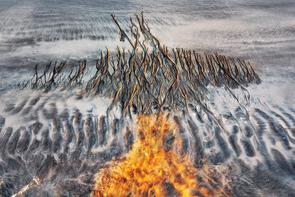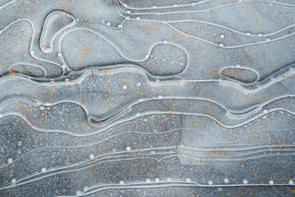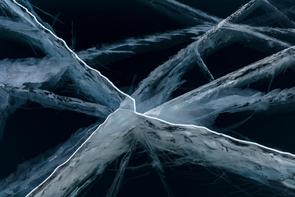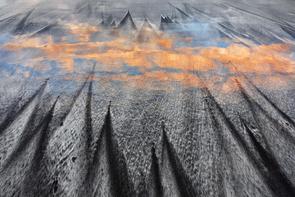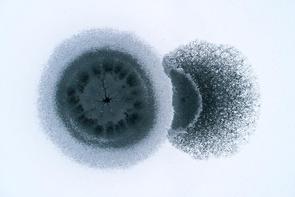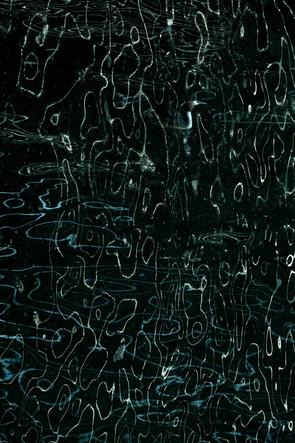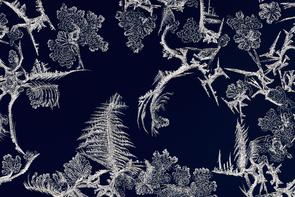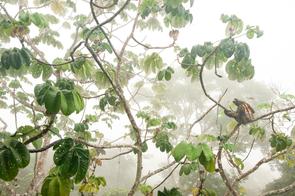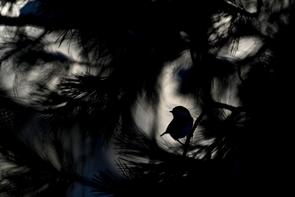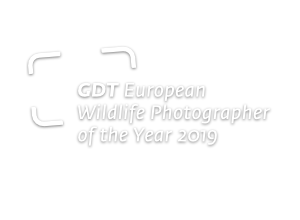
European Wildlife Photographer of the Year 2019
The German Society for Nature Photograpy (GDT) presents the award-winning images of the competition European Wildlife Photographer of the Year 2019. Eduardo Blanco Mendizabal from Spain is this year's overall winner with his picture of an iberian lynx.
Overall Winner: Eduardo Blanco Mendizabal - Spain
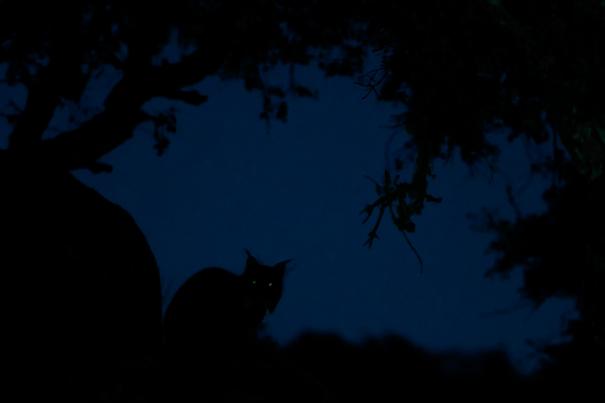
The Ghost
Early this year, I visited the nature park of Sierra de Andújar in Andalusia (Spain) to look for the most endangered species of wild cats in Europe, the Iberian lynx (Lynx pardinus). One evening, I discovered a lynx right beside the road. The animal hardly took any notice, but proceeded to groom itself quietly. Even the headlights of my car did not bother it. I took many photographs, but only in this one shot, the lynx's eyes light up ghostlike.
Canon EOS 7D Mark II, 4.0/200-400mm, ISO 800, tripod
Biography Eduardo Blanco Mendizabal
Eduardo Blanco Mendizabal, born in Corella, Spain, in 1977, has always been drawn to photography, but didn't get his first camera until the age of 19. Growing up in a small town in pre-digital times, his road to photography was a long and hard learning process.His degree in Wildlife and Forestry Conservation and a licence as a nature guide gave him the chance to feel the soil underneath his feet and the wind in his face. He loved his three-year stint as an environmental technician in his hometown and still occasionally leads guided tours at the Natural Park of Bardenas Reales.
With his favourite lens, a 100-400mm tele-zoom, Eduardo Blanco Mendizabal’s subjects are as varied as wild animals, details of remote sceneries or portraits of people. Although his portfolio mainly consists of landscapes, he also aims at depicting mammals – and sometimes he is lucky!
A professional photographer since 2005, his pictures have been published in the leading Spanish photography magazines.
Eduardo Blanco Mendizabal is a renowned wildlife and travel photographer, who likes to share his time and experience with students during workshops in Spain and photography tours around the world. He loves to discover new countries, but ends up finding motivation near home.
He is the author of several books, among them Fotografiar con mal tiempo, un buen momento (2016) and Bardenas Reales, en busca de la luz (2018).
Audience award
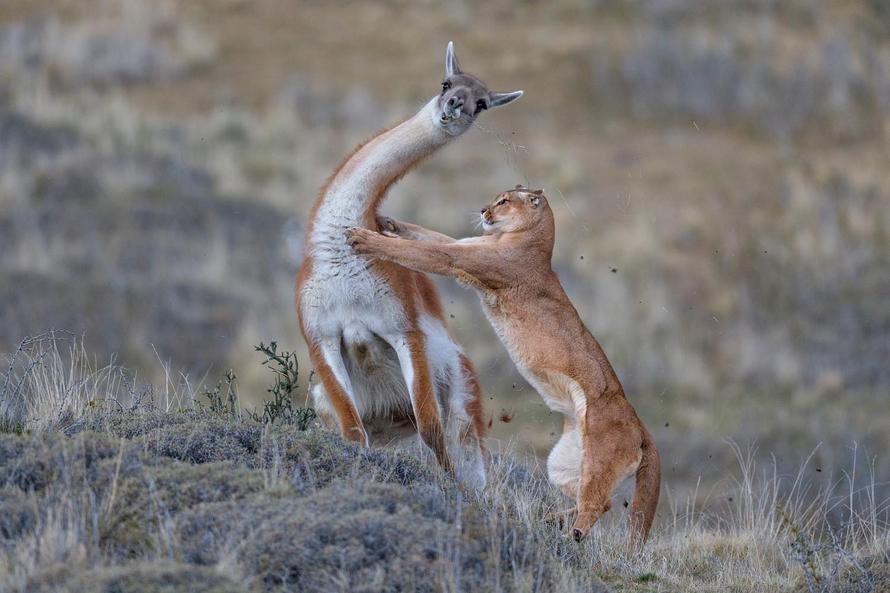
Ingo Arndt (DE) | A puma hunting a fully-grown male guanaco
Thank you
 We'd like to thank our sponsor AC-Foto for providing valuable prizes for this contest!
We'd like to thank our sponsor AC-Foto for providing valuable prizes for this contest!
Introductory note to the GDT contest European Wildlife Photographer of the Year 2019
From Prof. Dr. Beate Jessel
Soft-footed were both the photographer and the subject of this year's winning image, the lynx. A photo managed to capture a moment that hardly any of us will ever witness. Not only because the lynx is such a timid fellow, but also because the Iberian lynx – seen in this year's winning photograph – as well as the European lynx, whose traditional habitat includes Germany, are extremely rare species today. At the end of the monitoring year 2017/2018, there was evidence of 85 independent adults and 43 juveniles in Germany. This means, the conservation status in our part of the world is still to be considered as critical.
In addition to the outstanding technical qualities and expressive power, this year's overall winning photo draws attention to a species threatened by us humans, thus drumming up support for the issues of nature conservation. Habitat fragmentation is one of the main factors limiting the lynx' distribution and the exchange between populations. This threat does not affect the lynx alone: many other species such as the wildcat and the otter suffer under habitat fragmentation.
The winning image as well as all the other submitted photographs have been taken with great patience and persistence. They reflect the diversity and unique beauty of nature, of plants and animals; they show surprising facts, impress us with their clarity or dynamics. The participating photographers have once again proved their skills and an eye for the essential aspects of their subjects, be it landscapes or details of individual species. But an experienced eye and a lot of patience are not features exclusively held by photographers: it is what every observer of nature needs. These are qualities of those who contribute their knowledge and observations to monitoring programmes and population counts, which inform us about biodiversity and the quality of habitats.
And so I hope that these powerful photographs inspire many of you to go outside more often and keep your eyes and ears open for special encounters with and in nature. True to the motto “People only protect what they have come to know”, this could be the starting point of involvement in nature conservation. In view of the continuous decline of species this is as pressing as never before.
Prof. Dr. Beate Jessel
President of the Federal Agency for Nature Conservation
Jury’s comment
From Richard Peters
It is as daunting and inspiring as it is exciting and humbling to be part of a jury assessing thousands of images from photographers all over Europe. The responsibility of such a challenge is not taken lightly. It’s a task that also serves as a powerful reminder that Europe is home to exceptionally talented, creative and forward-thinking photographers. Honouring these photographers whilst simultaneously keeping the principles and core values of the GDT, was of upmost importance to each and every one of us who had the honour of judging.
What is also clear is that sitting on a panel of accomplished jury members highlights the complexity of image selections, as opinions will vary. In fact, it is essential that they do. Tastes in style, storytelling, emotion and plain technical excellence are favoured and prioritised differently. An image that, when viewed on its own, would appear to be a show-stopper, can suddenly fall away when seen in the context of thousands of other images within the same category. It is a selection process that is very intricate, detailed, methodical and fair. There are images that immediately resonate with all the jury members and others that divide opinion, promoting healthy debate to reach an outcome. None more so than this year’s overall winner.
The Ghost by Eduardo Blanco Mendizabal (Spain) grabbed the jury’s attention because it is different. It shies away from current trends and goes right back to basics. It stood out immediately because of its powerful but very subtle appearance. It is an image that will not be obvious to everyone immediately but more so a photo that draws you in the more you view it. As your eye adjusts to the darkness of the frame, the image begins to come alive.
There are just two predominant colours: blue and black. The subdued colour palette informs us it’s twilight, playing a vital role in acknowledging the typically nocturnal and solitary hunting behaviour of the subject. The simplicity of the image relies on using these dark tones to create a photo that is almost entirely made up of silhouettes. This technique relies on immediate and obvious subject identification, which is provided thanks to the wonderful and distinctive shape of the lynx’s ears. More than that though, the lines offer a sense of place, with the surrounding shapes telling the viewer that the curious cat was observing from a clearing in its bushy habitat.
A strong focal point is essential in such a delicate photo, to ensure it doesn’t get lost in the very tones that give it such atmosphere. Something to grab the viewers’ attention and bring the image together as one coherent frame. Utilising the car’s headlights to provide catch-lights, without also lighting up the surrounding area, the eyes hint at the incredible vision these animals have. And with that, the ghostly shape of the lynx springs to life with an electrifying focal point.
As is often the case with such photos, its simplicity is counter-balanced with technicalities. In this case, a very brave decision was made. The jury were impressed that, despite the incredibly low light, Eduardo Blanco Mendizabal took the risk of taking this shot with a 6 second shutter speed. In such dim lighting, the obvious choice would have been either to just observe the lynx or boost the ISO to increase shutter speed. Doing so would have resulted in an image with nowhere near as much impact. The frame relies on that hint of softness to the subject and so it was a gamble that was rewarded in the best way possible; an image that feels very real and honest to the situation that the photographer found himself in.
For some jury members it was a clear and obvious winner. For others, some discussion was required to appreciate its nuances. Points were raised for and against, with opinions changing and reforming as we pushed towards the ultimate decision. When the decision was made, everyone agreed that an image that provokes such debate clearly breaks the trend and offers something different. As the winning image to such an important competition, this aspect is essential. Often the worthiest images polarise opinions, push boundaries or grow as you dive deeper beyond their surface. That is the case here.
The jury concluded that Eduardo Blanco Mendizabal’s photo offers a captivating perspective, portraying the lynx’s elusive nature. It immediately commands the viewer’s attention in a way that is not traditional or obvious, and also at a time when most others would have simply put the camera away without taking a photo.
Whilst all styles of photography have their place, in a time when camera-traps, drones, perfectly lit and stylised imagery are at their most fashionable, it can be easy to forget the power of stripping it all back to basics. To a simple concept. To a photo that takes us back to the fundamentals of wildlife photography. To evoking raw emotions and sparking debate. The power of such photographs doesn’t come from technical perfection, impeccable workflow or the latest innovative gadget. It comes from offering the viewer a sense of connection to the subject, of atmosphere, of how the photographer must have felt at the moment of capture.
Simply put, The Ghost, is as daring and brave as it is haunting and beautiful.
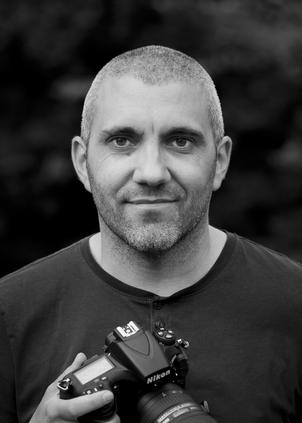 Richard Peters (on behalf of the jury)
Richard Peters (on behalf of the jury)
We´d like to thank our sponsors:















